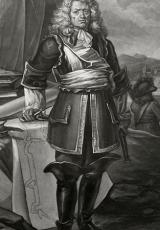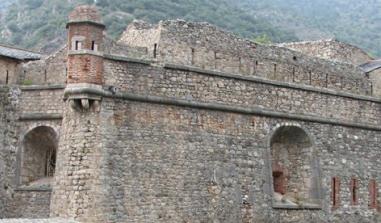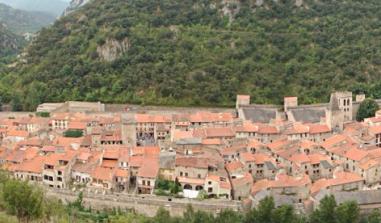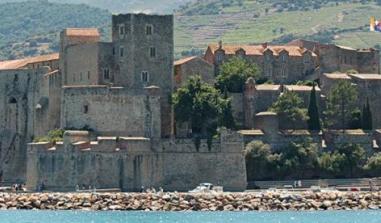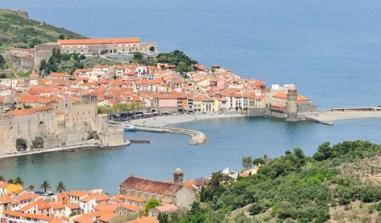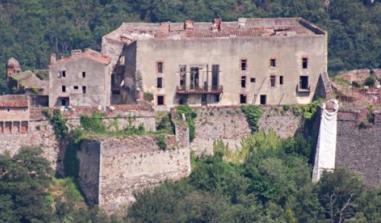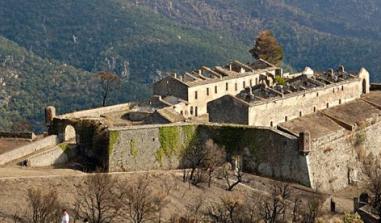Citadel of Mont-Louis

Aerial view of Mont-Louis Citadel. ©Office du Tourisme de Mont-Louis
Built by Vauban from 1679 to 1681, the citadel of Mont-Louis would go on to play an important role in the Treaty of the Pyrenees and up to the French Revolution
Since it was founded in 1679, Mont-Louis has experienced an extraordinary military past. In addition to the political decisions made by King Louis XIV, the enlightened plans drawn up by the well-known French architect Vauban and the very active and rigorous surveillance of the Secretary of State for War Louvois, the place has been the home and domain of soldiers!
Following the signing of the Treaty of the Pyrenees in 1659 and on the behest of King Louis XIV who wished to secure this region only recently reclaimed by Spain, Vauban, General Commissioner of Fortifications, designed this stronghold from the ground up in 1679. The special strategic location, at the crossroads of the comarques of Conflent, Capcir and Cerdanya, determined the final choice of the site. Moreover, this position gave easy access to materials, pastures, mills, wood and fields.
Mont-Louis was planned over two terraces: the citadel and the town.
The original plans included a lower town for the sutlers, stables and feedstores as well as a redoubt but they were never built for lack of funds.
As concerns the military citadel, the view from which stretched from the Canigou to the Serra del Cadi, the defences were based on typical Vauban features: bastions, battered curtain walls and demi-lunes. While the chapel, the arsenal and two powder stores were completed, the governor's house, chaplain’s quarters and the hall to provide shelter for the soldiers never got off the ground.
Adhering to simple principles, Vauban then set about organising the interior layout of the new town to house a small middle class of craftsmen with infantry barracks either side of the sole entryway into the citadel. It met military requirements and was also a practical place to live and work with a simple and well-ordered layout where the command, combat and civilian activities were harmoniously integrated.
During this period of temporary peace, the soldiers provided most of the labour, in particular the Vierzet-Famechon, Stoppa Brendelé, Furstemberg and Castries regiments. There were many soldiers living around Mont-Louis - 3,700 were present when Louvois visited the site in 1680, all paid a poor daily wage for such harsh labour in tough conditions, not least the severe climate in Mont-Louis. They were supervised by specialised craftsmen (masons, stonecutters, carpenters, joiners, blacksmiths, well-diggers and the like) and overseen by quartermasters and engineers working for the King. Any prestige from wearing the uniform was sacrificed to the meanliness of their task.
In 1681, some 29 months after Vauban’s visit, most of the work was completed and the fortress was considered to be in a state of defence. On 26 October, the first governor, François de Fortia, Marquess of Durban, took possession of the place during a sumptuous celebration amid “loud cries of 'Long live the King!’ by the people of Cerdagne who came in droves and were delighted to witness such a ceremony”. Henceforth, Mont-Louis marked the final military southern border and was well positioned to keep close watch over the stronghold of Puigcerdà in Spanish Cerdagne. The excellent choice of location has persisted through the centuries to today.
In 1793, the fortress was central to the military events taking place in Cerdagne. Mont-Louis was renamed Mont-Libre. Taking advantage of the chaotic situation in France, the King of Spain used the French regicide as an excuse to send in his troops to invade the entire region of the Pyrénées-Orientales. In Cerdagne, General Dagobert pushed back the Spanish army twice. In July 1793, the Spanish troops occupying the Col de la Perche passage were routed out and in September those camped above Canaveilles were resoundingly defeated. General Dagobert continued his efforts and invaded Spanish Cerdagne and Puigcerdà, where he died in 1794 (Monuent Dagobert stands on Place de l’Eglise).
Peace returned on 1 August 1795 and Mont-Libre was essentially used as a storehouse by the army stationed in Cerdagne. Monte-Libre reverted back to its name of Mont-Louis on 24 October 1803. In 1808, Mont-Louis became a huge transit camp and a hospital for the Spanish army. With the Restoration, Mont-Louis’s defensive importance was more related to its topography than to the fortress itself. The work resumed with intensity in 1887 to improve the Mont-Louis’ defences in particular its immediate surroundings.
The World Wars saw floods of emigrants crammed within the fortress, during the Spanish Civil War in 1936 before the German Occupation and the liberation of the site by the Free French Forces. In 1946 the fortress reclaimed its original function as a military stronghold when the 11th BPC parachute regiment were stationed there and then in 1964 the site became the National Commando Training Centre.
This centre dedicated to French expertise in commando training instructed military personnel (officers, NCOs and other ranks) from the land and air forces, the national gendarmerie and foreign armies, but was also a training centre with special programmes for war correspondents, STAPS students (physical education) and personnel from the justice and interior ministries.
But the fortress did retain one unique architectural feature: the Puits des Forçats (Convicts’ Well), with its enormous wheel that supplied water to the site (open all year round to visitors). The town walls also harbour the first solar furnace with double reflection built in 1949 (also open to visitors through the year). Its church, dedicated to St Louis, was started in 1733 based on the model of the chapel in the citadel. Inside there is a series of Roussillon baroque altarpieces dating from the 17th and 18th centuries with a very fine statue of Christ made of polychrome wood (17th century) in the Rhenish style.
Mont-Louis Tourist Information Office
3 rue Lieutenant Pruneta 66210 Mont-Louis, France
Tel/fax: +33 (0)4 68 04 21 97
E-mail: otmontlouis@wanadoo.fr
Guided tours: Fortress/Puits des Forçats well: during winter, every day except Sunday from 11 am to 2 pm. Village: in winter every day except Sunday at 3.30 pm. Solar furnace: Low season: every day at 10 am, 11 am, 2 pm, 3 pm and 4 pm. Summer: every day from 10 am to 6 pm, tours every 30 minutes.
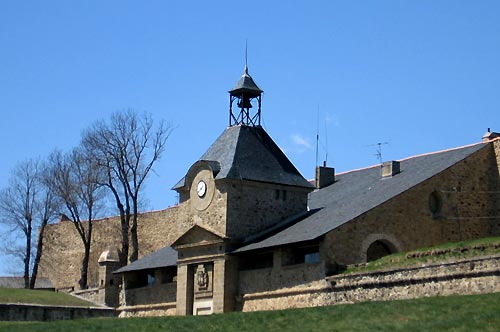
Entrée de la citadelle de Mont-Louis. ©Office du tourisme de Mont-Louis
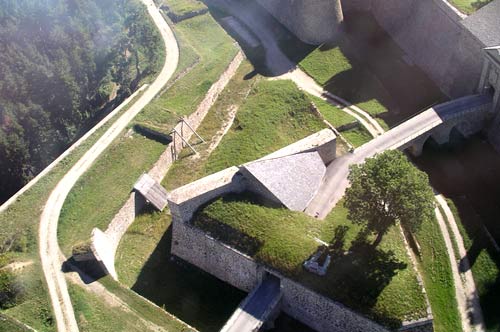
Demi lune de la porte nord. ©Office du tourisme de Mont-Louis
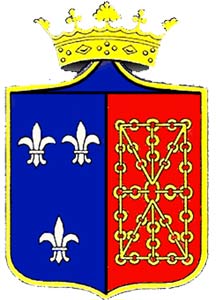
Blason Mont-Louis. ©Office du tourisme de Mont-Louis
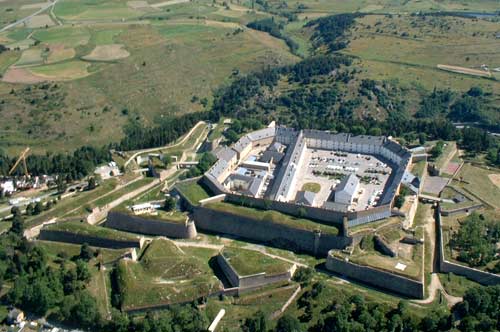
Vue aérienne de la citadelle de Mont-Louis. ©Office du tourisme de Mont-Louis
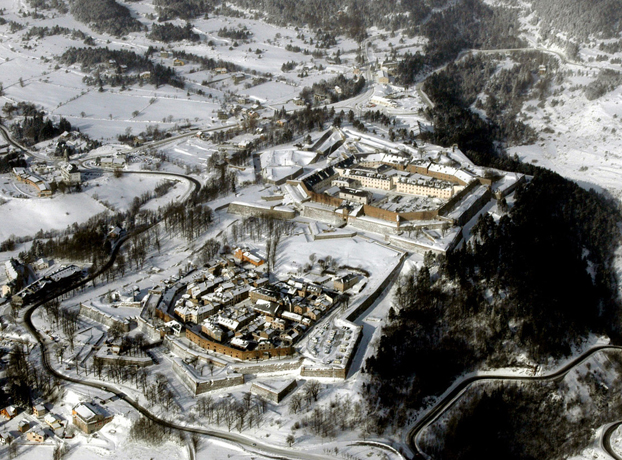
Vue aérienne de la citadelle de Mont-Louis. ©Office du tourisme de Mont-Louis
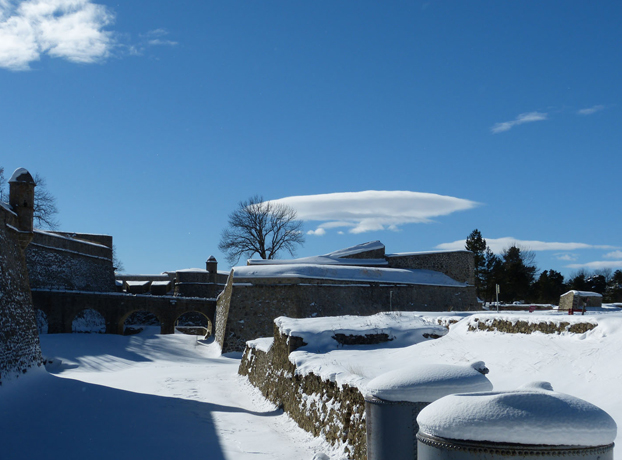
Entrée de la citadelle de Mont-Louis. ©Office du tourisme de Mont-Louis
Practical information
66210
Mont-Louis
Tél. ou fax : 04.68.04.21.97
Visits to the Citadel/Village Full price: €5 Reduced price: €4 Children (7 to 10 years): €2 Young people (11 to 18 years): €2.50 Free for children under 7
du 1/09 au 30/06 : rom 1/09 to 30/06: open from 9.00 am to 12.30pm/2.00 pm to 5.00 pm July/August: open from 9.00 am to 12.h30pm/2.00 pm to 6.00 pm every day
During the Christmas holidays. 1 January, 1 May, 11 November, 25 December. Sundays and week-ends in November, December and January.


